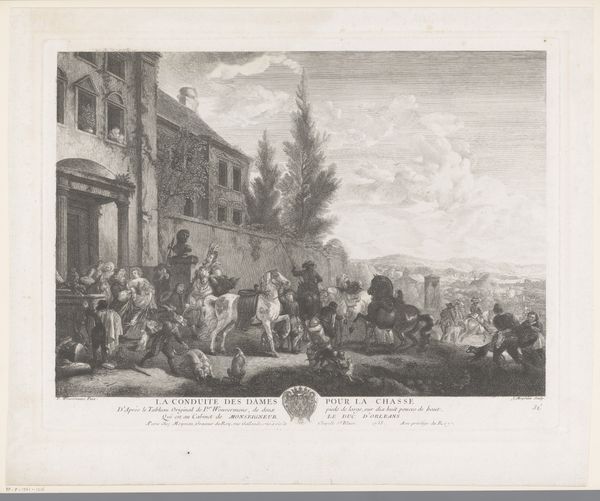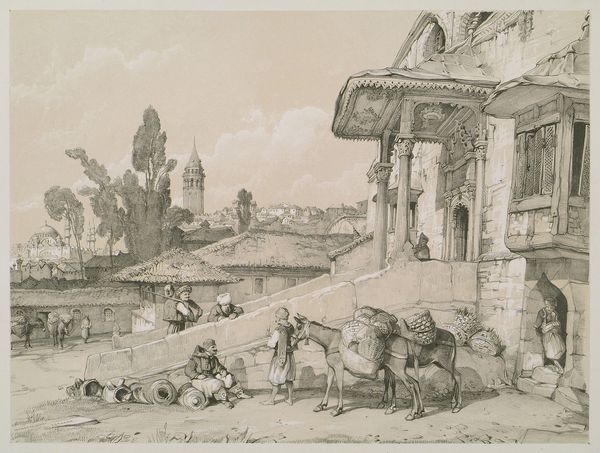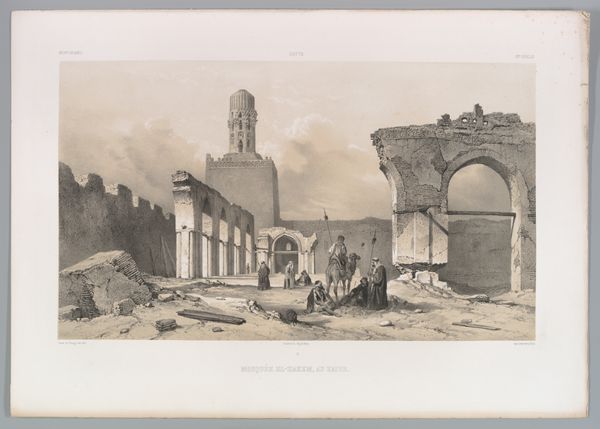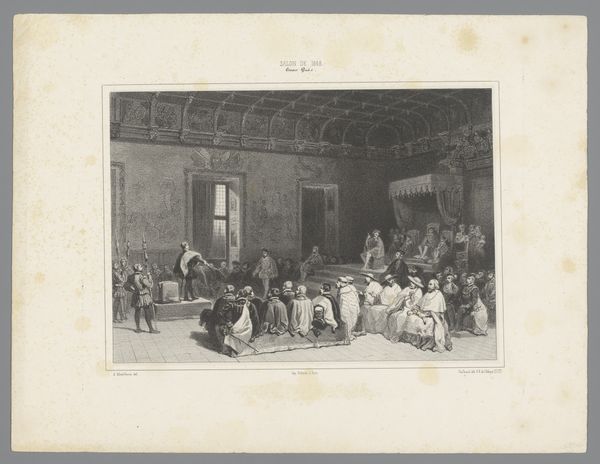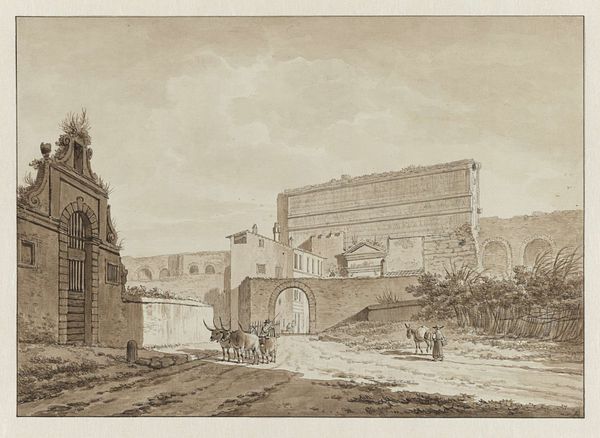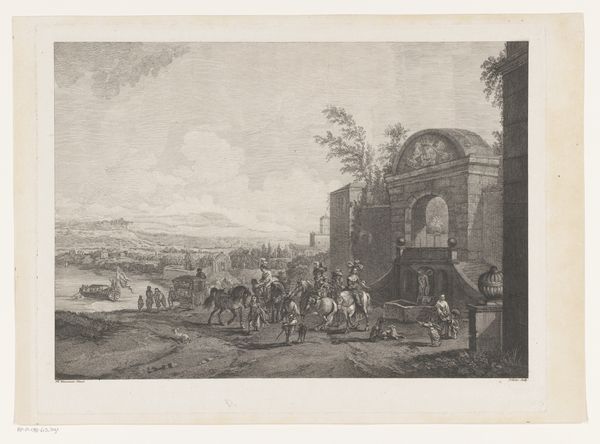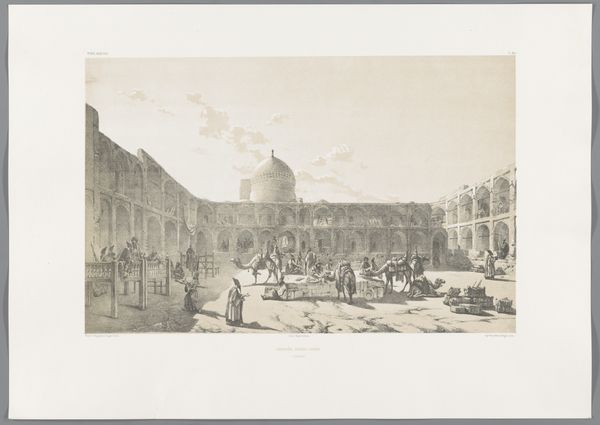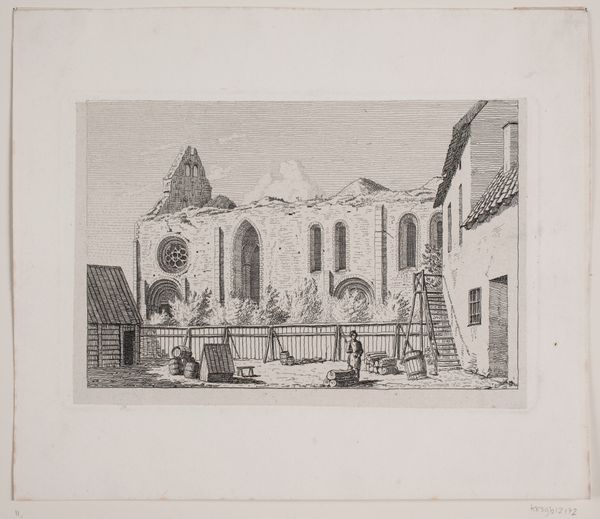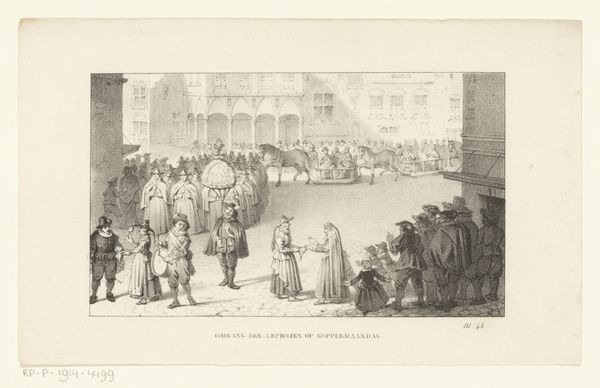
Kartuizers delen aalmoezen uit bij een klooster c. 1822 - 1828
0:00
0:00
print, engraving
#
narrative-art
# print
#
old engraving style
#
cityscape
#
genre-painting
#
history-painting
#
academic-art
#
engraving
#
realism
Dimensions: height 359 mm, width 545 mm
Copyright: Rijks Museum: Open Domain
Charles Edouard baron de Crespy le Prince made this print using a technique called aquatint. It is a printmaking process that simulates the effects of watercolor, using acid to create tonal variations on a metal plate. The grainy texture seen here is achieved by exposing the plate to acid through a porous ground, resulting in a range of etched dots that hold ink. This technique allowed the artist to create subtle gradations of light and shadow, giving the image a soft, atmospheric quality. The scene depicts monks distributing alms outside a monastery. The artist skillfully uses the aquatint to convey a sense of depth and space, rendering architectural details with precision and capturing the figures with a sense of realism. By employing aquatint, Crespy le Prince bridges the gap between drawing and printmaking, elevating what might otherwise be considered a humble medium into a sophisticated form of artistic expression. This reminds us that the value and meaning of a work can be found in the artist’s considered choice of materials and methods.
Comments
No comments
Be the first to comment and join the conversation on the ultimate creative platform.

